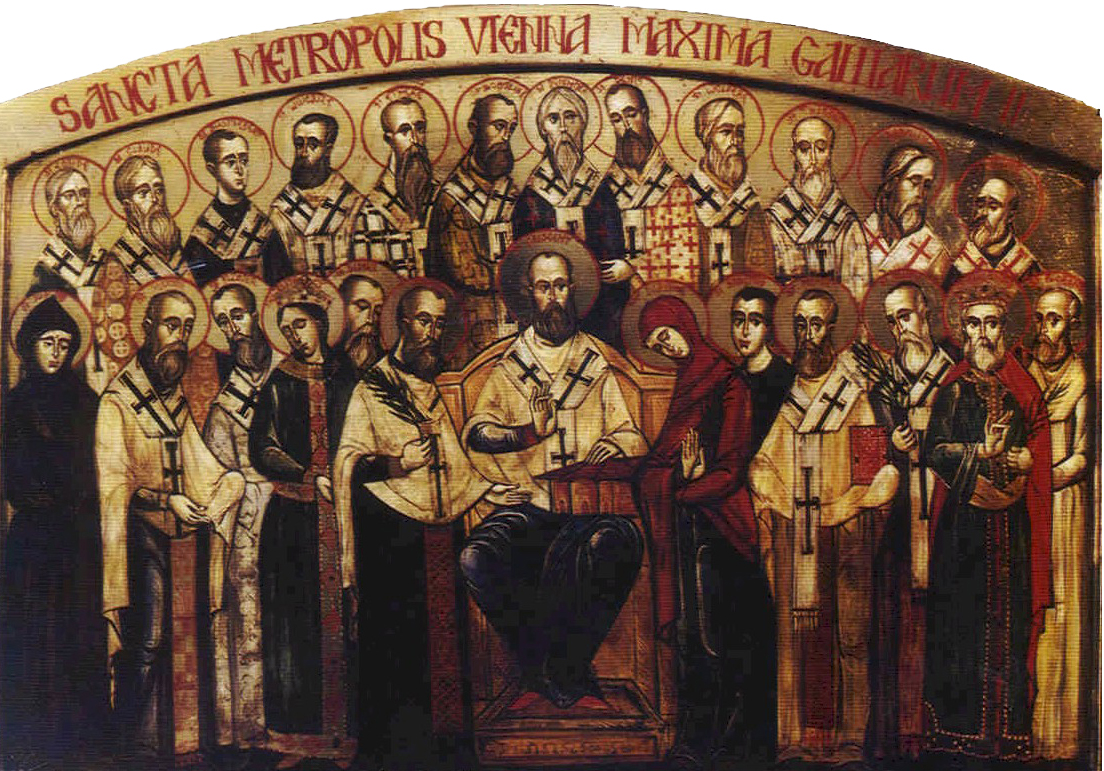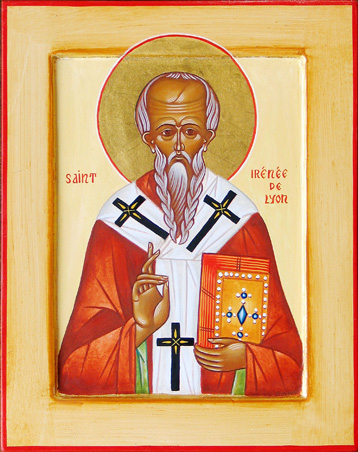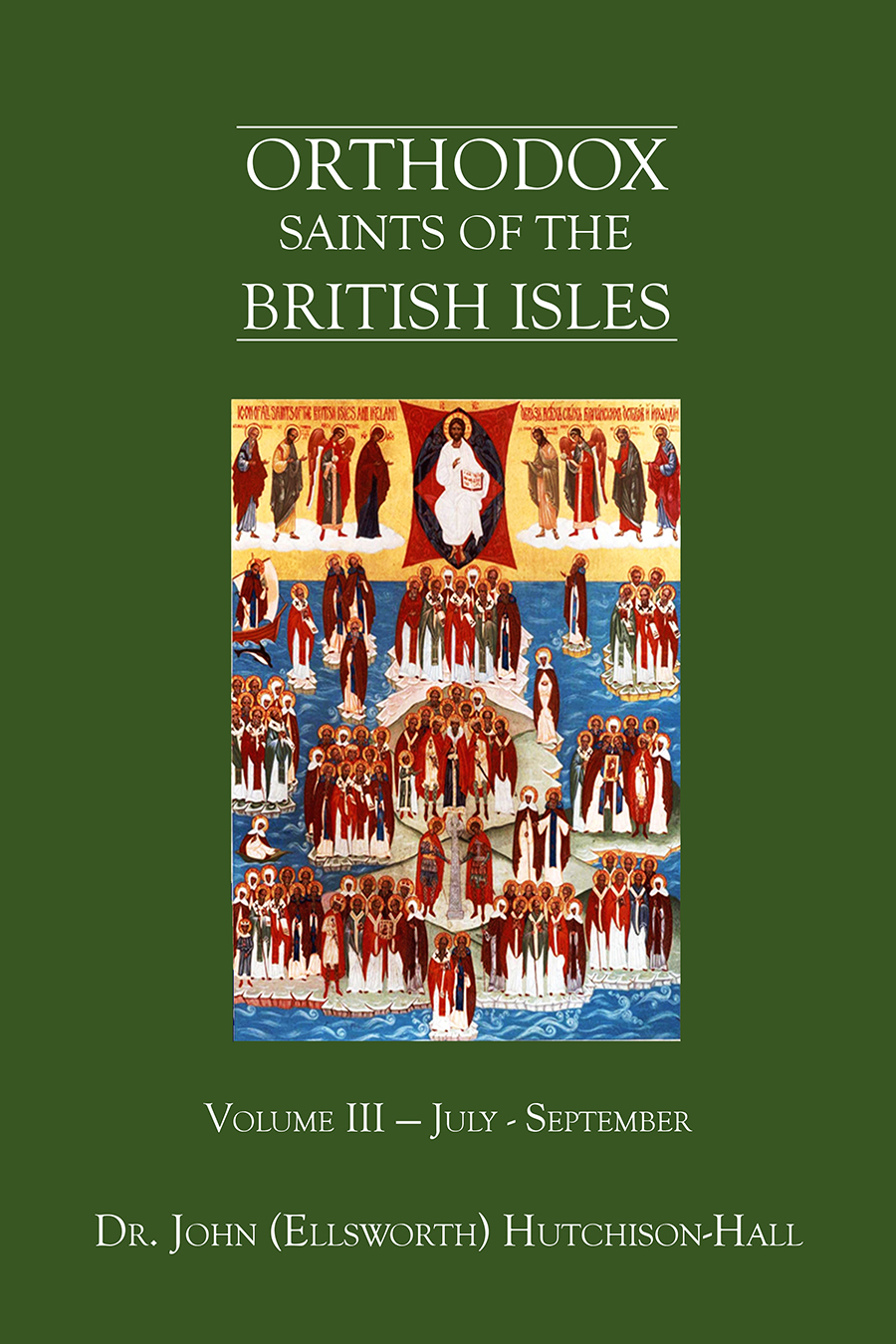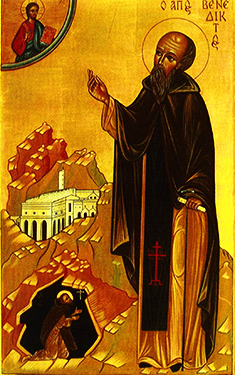
Orthodox Saints of the Pre-Schism
See of Rome
11th July (NS) — 28th June (OS) 2025
ARGYMIRUS of CÓRDOBA, born in Cabra near Córdoba (southern Spain), St. Argymirus was a nobleman and high-ranking official during the rule of Emir Muhammad I of Córdoba (r. 852–886). Deposed from office due to his Christian faith, St. Argymirus received monastic tonsure. However, he was soon charged with blasphemy by the Moors, and martyred on 28th June, 856.
AUSTELL of CORNWALL, (Sixth Century), there is no written Life of this saint extant, though there are two traditions concerning the identity of St. Austell. The first, and more commonly accepted, is that he was a disciple of St. Maine of Bretagne (21st June) during the latter’s time in Cornwall, and later lived as a hermit in the area now known as St. Austell in Cornwall, England. The other, more recent tradition, posits that St. Austell was a woman (Hawystill), one of the daughters of King St. Brychan of Brycheiniog (6th April), who left her name to Aust in South Gloucestershire, England.
BENIGNUS of UTRECHT, a sixth century French Bishop, in all likelihood, of Chartres (north-central France). He seems to have resigned his See and retired to Utrecht (central Netherlands) where his relics were re-discovered in 996.
CRUMMINE, (Fifth Century), St. Crummine was a disciple of St. Patrick of Ireland (17th March), who placed him in charge of a church at Lackan, Co. Westmeath, Ireland. Nothing further is known of his life.
EGILO (EGILON, EIGIL), an Abbot of Prüm in Lotharingia, present-day Diocese of Trier in Germany. St. Egilo served as Abbot of, and undertook the restoration of the Abbey of St. Peter of Flavigny-sur-Ozerain (abbaye Saint-Pierre de Flavigny-sur-Ozerain) (circa 860–866) in present-day east-central France. Lastly, St. Egilo founded (or restored) an abbey at Corbigny in Burgundy (east-central France). St. Egilo reposed in 871.
HEIMRAD, a priest who spent several years on pilgrimages. His detatchment from the world lead to behaviour that might be thought of as that of a Fool for Christ. St. Heimrad lived for a while as a monk at Hersfeld Abbey (abtei Hersfeld) in Hesse (Germany), and spent his final days as a hermit at Hasungen Abbey (Kloster Hasungen) in present-day Burghasungen near Kassel, Germany. St. Heimrad reposed in 1019.
IRENAEUS of LYONS, a disciple of St. Polycarp of Smyrna (23rd February), who, in turn, was a disciple of the Apostle and Evangelist John the Theologian. St. Irenaeus was sent to Gaul (France) by St. Polycarp. There he was consecrated Bishop of Lyons (east-central France) circa 177, and martyred in 200. St. Irenaeus is considered the first of Western Christendom's great theologians and ecclesiastical writers. His Adversus Haereses in which he refutes the various schools of Gnosticism, is a classic of Christian apologetics.
PAPIAS (PAPIUS) the MARTYR, a victim of the Diocletianic Persecution (303–313), St. Papias was martyred circa 303, possibly in Sicily. There is no further information on his life extant.
THEODICHILDIS (TELCHILDIS), a nun at the Abbey of Our Lady of Faremoutiers (Abbaye Notre-Dame de Faremoutiers) in present-day north-central France. St. Theodichildis was later the first Abbess of the Abbey of Our Lady of Jouarre (abbaye Notre-Dame de Jouarre) in Jouarre (north-central France). St. Theodichildis reposed circa 660.
Get your copy of Orthodox Saints of the British Isles today.
Available at Amazon or your favourite e-bookstore.
ABUNDIUS, a parish priest in a village near Cordoba during the Moorish occupation. St. Abundius, one of the Martyrs of Cordoba, was arrested for preaching against Islam, and brought before the Emir. He was sentenced to death by beheading for refusing to renounce Christ. After the sentence was carried out, his body was thrown to dogs, and no relics survived.
AMABILIS, an English noblewoman who was a monastic at the Abbey of St. Amand in Rouen.
BENEDICT of NURSIA
Father of Western Monasticism.
The only authoritative life of St. Benedict extant is by St. Gregory the Dialogist (3rd September) in the second book of his Dialogues, and this is more of an outline of important episodes in St. Benedict’s life, than a proper vita. According to tradition St. Benedict and his sister St. Scholastica (10th February) were twin children of a Roman noble, born in Nursia, near Spoleto. When St. Benedict was most likely in his early twenties, he left behind secular concerns to devote himself to God, and went to live as a hermit in a cave near Subiaco. There he was a spiritual child of the near-by hermit, St. Romanus of Subiaco (22nd May), who also tonsured him into monasticism.
In time, his holiness and fame as a wonderworker, drew many disciples to him and he built a lavra, for them. Around 530 he left Subiaco for Monte Cassino, where he founded the famous monastery, where he also composed his Rule, which, though initially was resisted by many as too harsh, came to be adopted by tens of thousands of monasteries the world over.
St. Benedict spent the rest of his life at Monte Cassino. St. Benedict reposed while standing in prayer before the altar in 550. St. Benedict was buried at Monte Cassino, though some of his relics were later translated to France.
Troparion of St. Benedict of Nursia
Tone I
By your ascetic labours, God-bearing Benedict, / you were proven to be true to your name. /
For you were the son of benediction, /
and became a rule and model for all who emulate your life and cry: /
“Glory to Him who gave you strength! /
Glory to Him who granted you a crown! /
Glory to Him who through you grants healing to all!”
Kontakion of St. Benedict of Nursia
Tone VI
You were enriched with God’s grace; /
your works agreed with your name, O Benedict, helpful servant of Christ God. /
Through prayer and fasting you were revealed to be filled with the gifts of the Spirit of God! /
You are a healer of the sick, the banisher of demons and speedy defender of our souls!
DROSTAN (DROSTÁN mac COSCREIG of DEER), According to the Aberdeen Breviary, St. Drostan was a disciple of St. Columba (9th June) who left his native Ireland for Scotland. There he founded and served as the first Abbot of Deer in Aberdeenshire. St. Drostan is counted amongst the Apostles of Scotland. He reposed circa 610.
HIDULF (HIDULPHUS) of MOYENMOUTIER, the founding-Abbot of what came to be called the Abbey of St. Hydulphe of Moyenmoutier (abbaye Saint-Hydulphe de Moyenmoutier north-eastern France). Historically he has been listed as a Bishop of Trier in the present-day German state of Rhineland-Palatinate, and an Abbot of Saint-Dié in eastern France, however, recent scholarship questions the accuracy of this. St. Hidulf reposed in 707.
JOHN of BERGAMO, consecrated Bishop of Bergamo in Lombardy (northern Italy) circa 656, St. John managed to root out the last vestiges of Arianism from his See. Unfortunately his success came at a great price, as he was martyred by supporters of Arianism in 681.
LEONTIUS the YOUNGER, a soldier who fought the Visigoths. After retiring from the army, St. Leontius married and settled in Bordeaux (south-western France). He later served as Bishop of Bordeaux. St. Leontius reposed in 565.
PIUS I, the tenth Pope of Rome from circa 142 until his repose circa 155. We know he was an opponent of Marcion and his Teachings. He is generally called a martyr, and while it is possible Pope St. Pius was martyred, there is no evidence to support this.
SABINUS (SAVINUS) and CYPRIAN of BRESCIA, (Date Unknown), two brothers venerated in Brescia in Lombardy (northern Italy) as martyrs. The extant Acts are of questionable veracity.
SABINUS of POITIERS, (Fifth Century), a disciple of St. Germanus of Auxerre (31st July). There are no reliable Acts extant, but according to local tradition St. Sabinus was a martyr.
SIDRONIUS, a martyr in Rome circa 270. No further information is extant.
SIGISBERT and PLACID of DISENTIS, St. Sigisbert was the founder of Disentis Abbey (kloster Disentis) in the present-day Swiss canton of Grison. He built it on land given to him by St. Placid, a local noble and landowner who later received monastic tonsure at the abbey. St. Placid was martyred for defending the abbey’s rights. Traditionally this was thought to have happened in the seventh century. However, more recent scholarship, supported by archaeological evidence places it a century or so later.
THURCYTEL (THURKETYL, TURKETIL) of CROWLAND, according to tradition, St. Thurcytel was a wealthy relative of, and senior advisor to, Edward the Elder, King of the Anglo-Saxons (r. 899–924) and Æthelstan, King of the Anglo-Saxons (r. 924–927). At some point St. Thurcytel withdrew from court life and received monastic tonsure. He restored Crowland Abbey (Lincolnshire, England) following its sack by the Danes, and served as its first post-restoration abbot. St. Thurcytel reposed circa 975.
Prior to the Schism the Patriarchate of Rome was Orthodox, and fully in communion with the Orthodox Church. As Saint John of Shanghai and San Francisco +1966 said “The West was Orthodox for a thousand years, and her venerable Liturgy is far older than any of her heresies”.
Details of British Saints excerpted from Orthodox Saints of the British Isles.
Details of continental saints from these sources.
In many cases there are several spelling versions of the names of saints from the British Isles. I use the Oxford Dictionary of National Biography version as the primary version with the more prevalent version in parenthesis e.g. Ceadda (Chad) of Lichfield.



